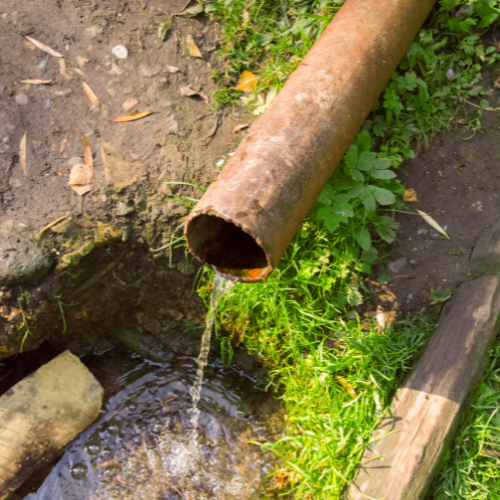When Does a Sewer Line Need to Be Replaced?
As a homeowner, maintaining your plumbing system is crucial, especially when it comes to your sewer line. This hidden but essential part of your home handles wastewater from sinks, showers, and toilets, keeping everything flowing as it should. However, sewer lines don't last forever, and when problems arise, knowing when to repair or replace the line can save you from larger issues down the road. Here’s a guide to help you understand the signs and factors involved in deciding when a sewer line replacement is necessary.
Frequent Backups and Clogs
Occasional clogs are normal, but if your sewer line experiences frequent blockages, this may indicate a bigger problem. When tree roots invade the sewer line, or the pipe has significant buildup, clogs become more frequent and harder to resolve with basic plumbing techniques. If you find yourself constantly dealing with backed-up drains, it may be time to consult a professional to inspect the line for potential replacement.
Slow Drains Throughout the Home
A slow drain in one fixture could be a localized problem, but if you notice slow draining in multiple areas, this is often a sign of a larger sewer line issue. Accumulated debris, grease, or invasive tree roots can block the flow of wastewater, making it slow to drain. Persistent sluggish drainage may suggest that the line has significant damage and requires replacement.
Unpleasant Odors Around the Yard or Inside Your Home
Sewer lines are designed to keep foul odors contained, so if you notice unpleasant smells around your property, there may be a crack or leak. Odors in the yard could indicate an outdoor leak, while smells indoors suggest possible damage closer to the home. Cracked or compromised sewer lines release sewer gases, creating a health hazard that often requires replacement to address fully.
Lush Patches in Your Yard
If you notice unusually lush or green patches in your yard, it could be due to a leaking sewer line that’s acting as fertilizer. The nitrogen and other nutrients from wastewater can spur unexpected plant growth in areas where leaks occur. Not only is this a sign of a leak, but it may also indicate that the line is deteriorating to the point where replacement is the most effective solution.
Foundation or Structural Damage
Sewer line leaks that are left unaddressed can cause severe structural damage over time, especially if the line runs close to your home’s foundation. As leaking water accumulates, it can erode soil, create voids, and destabilize the ground. In extreme cases, this can lead to cracks in your foundation or even shifting. If a sewer line is affecting your home’s structural integrity, replacement is often the safest and most efficient option.
Mold Growth or Dampness Inside
When a sewer line is damaged beneath or near the home, moisture may start to seep into your walls and floors, promoting mold growth. Mold is not only a structural hazard but also a health risk. A musty smell, increased humidity, or visible mold are signs that your sewer line could be compromised and might require replacing.
Old Age of the Sewer Line
Like any infrastructure, sewer lines age and wear out. Materials such as clay, cast iron, or even older types of PVC degrade over time, especially if they’re exposed to high usage or environmental factors. Most sewer lines last between 40 to 50 years, though this varies based on the material and local conditions. If your home is older, or if you’re unsure of the last time the sewer line was replaced, it’s wise to have it inspected, especially if you’re noticing other symptoms on this list.
Replacement Options
If you determine that a sewer line replacement is necessary, you have a few options:
Traditional Trench Replacement: This involves digging a trench to remove and replace the old pipe. While effective, it’s labor-intensive and disruptive.
Trenchless Pipe Replacement: Methods like pipe bursting and pipe lining are less invasive, replacing the sewer line without extensive digging. This can be more affordable and causes minimal damage to landscaping.
Consulting with a Professional
Replacing a sewer line is a major undertaking that should always be handled by a professional plumber. They can perform a camera inspection, locate the precise issue, and advise you on whether repair or replacement is the best route. Professionals also have the knowledge to navigate local codes and ensure that your new line is installed safely and legally.
Final Thoughts
Knowing the signs of a failing sewer line can help you act early, avoiding costly repairs and potential health hazards. If you’re experiencing any of the above symptoms, don’t wait. Early action can save you time, money, and hassle in the long run.

